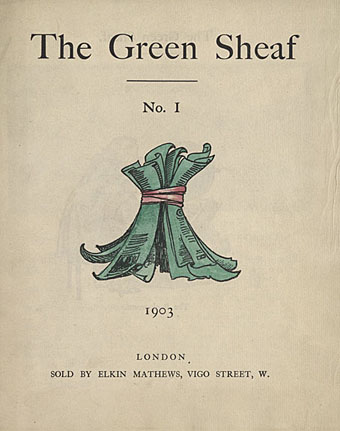
Pamela Colman Smith, artist, is more of a familiar figure today than she used to be thanks to the increased attention given to women artists of the past. Less familiar is Pamela Colman Smith, magazine editor, a role she briefly occupied in 1903 when she launched The Green Sheaf, an arts magazine published in London. This was a slight publication—the first number is a mere 8 pages—but the contents included heavyweight contributors such as John Masefield together with Smith’s mystically-oriented Irish friends, WB Yeats and “AE” (George Russell). Smith provided many of the illustrations, as did Cecil French and William Horton, the latter an artist whose work I hadn’t seen in colour before. All the colouring in The Green Sheaf was done by hand, presumably by Smith herself, which must have limited the circulation. Smith’s intention was to publish 13 issues a year, and 13 issues were all the magazine eventually managed. The number 13 was evidently an important one for the artist/editor, although we’re left to guess why. In addition to 13 issues, the subscriptions sold for 13 shillings, with individual issues costing 13 pence each. All the issues may be browsed or downloaded here.
See also: “A Paper of Her Own”: Pamela Colman Smith’s The Green Sheaf (1903–1904)
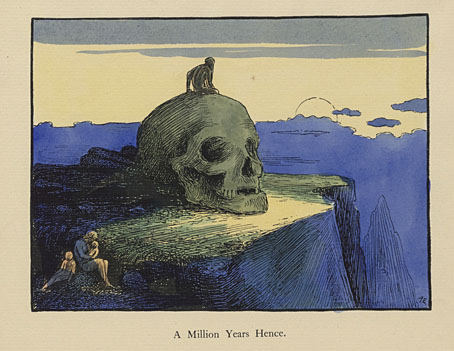
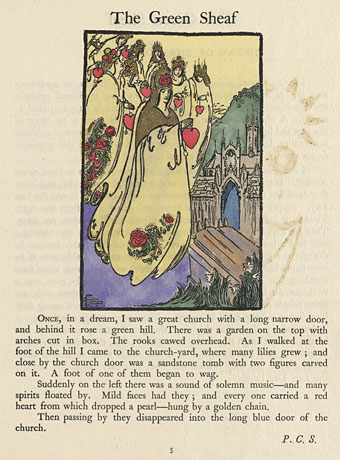
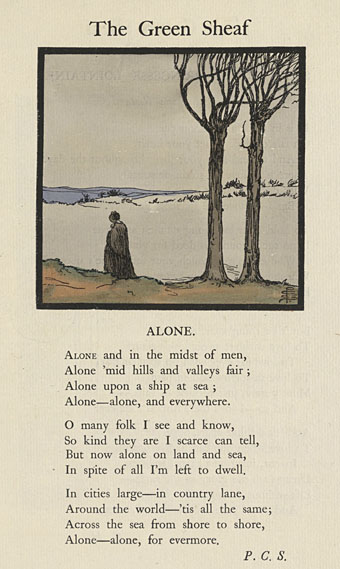
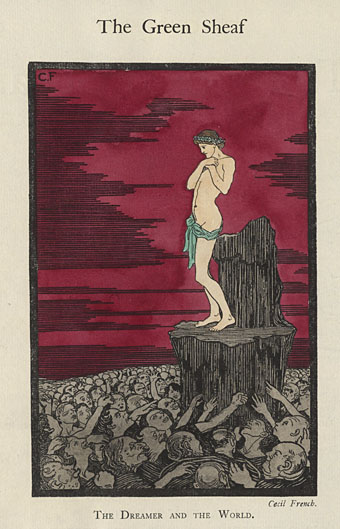
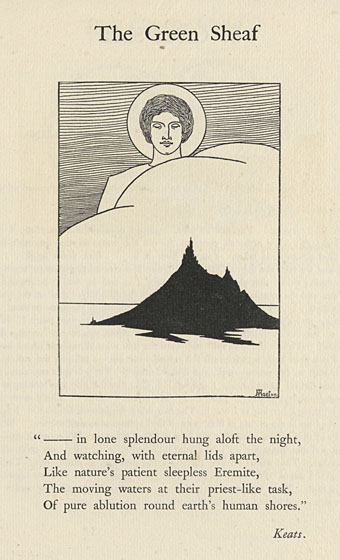
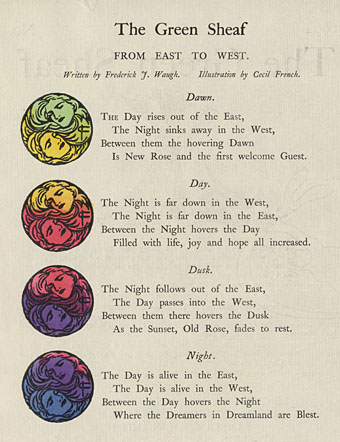
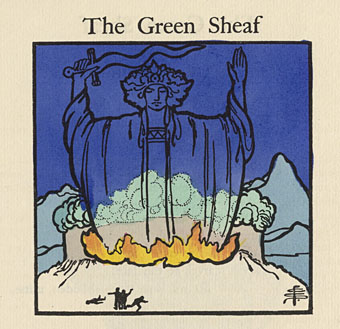
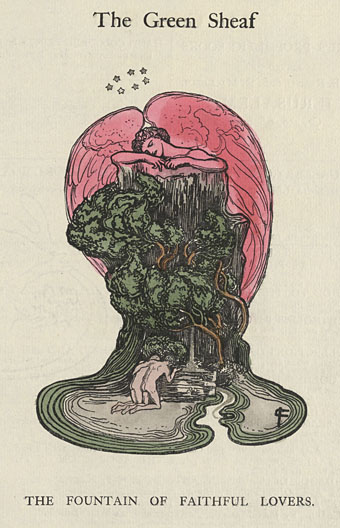
Previously on { feuilleton }
• Pamela Colman Smith’s Annancy Stories
• Pamela Colman Smith’s Russian Ballet
• The art of Pamela Colman Smith, 1878–1951

Thanks for this; I have a long-standing fascination with PCS due to her seminal tarot images, and it’s nice to learn a bit about her literary and illustration aspirations.
From her Golden Dawn and A.E. Waite connections she surely had some interest in Kabbalah, and the gematriatic evaluation of ‘Love’ in Hebrew is 13, maybe something there. Plus 13 moon cycles of course.
Thanks, Angus, I was also thinking of a lunar year as being the likely reason.
Some of her drawings in these pages are very similar to her Tarot designs, especially the penultimate image posted above.
Yes; it says as much at the link. I had no idea she was quite close with the Yeats brothers.
Hey, you’ve been on my mind lately. For years I’ve used your ‘Underground Tree’ as a basis for pathworking and meditation, but have recently started to evaluate the 1708 Pardes Tree as more useful for me. Partly due to the more apt numerology and structure, as I see it. I’m writing an essay about it now.
I wonder, in all your remixing of versions of the Etz Chaim, did you come to any conclusions about the Pardes Tree as compared to the Kircher Tree?
cheers,
Angus
Ha, I’m pleased to hear my Underground design has been some use! I’ve never thought much about the Kabbalah outside the most common formulation of the Tree of Life, what you might call the post-Golden Dawn system. It’s a large subject which I’ve only really dabbled in. Dealing with another system would be like learning a new language, something that requires more serious application.
Tell me about it …